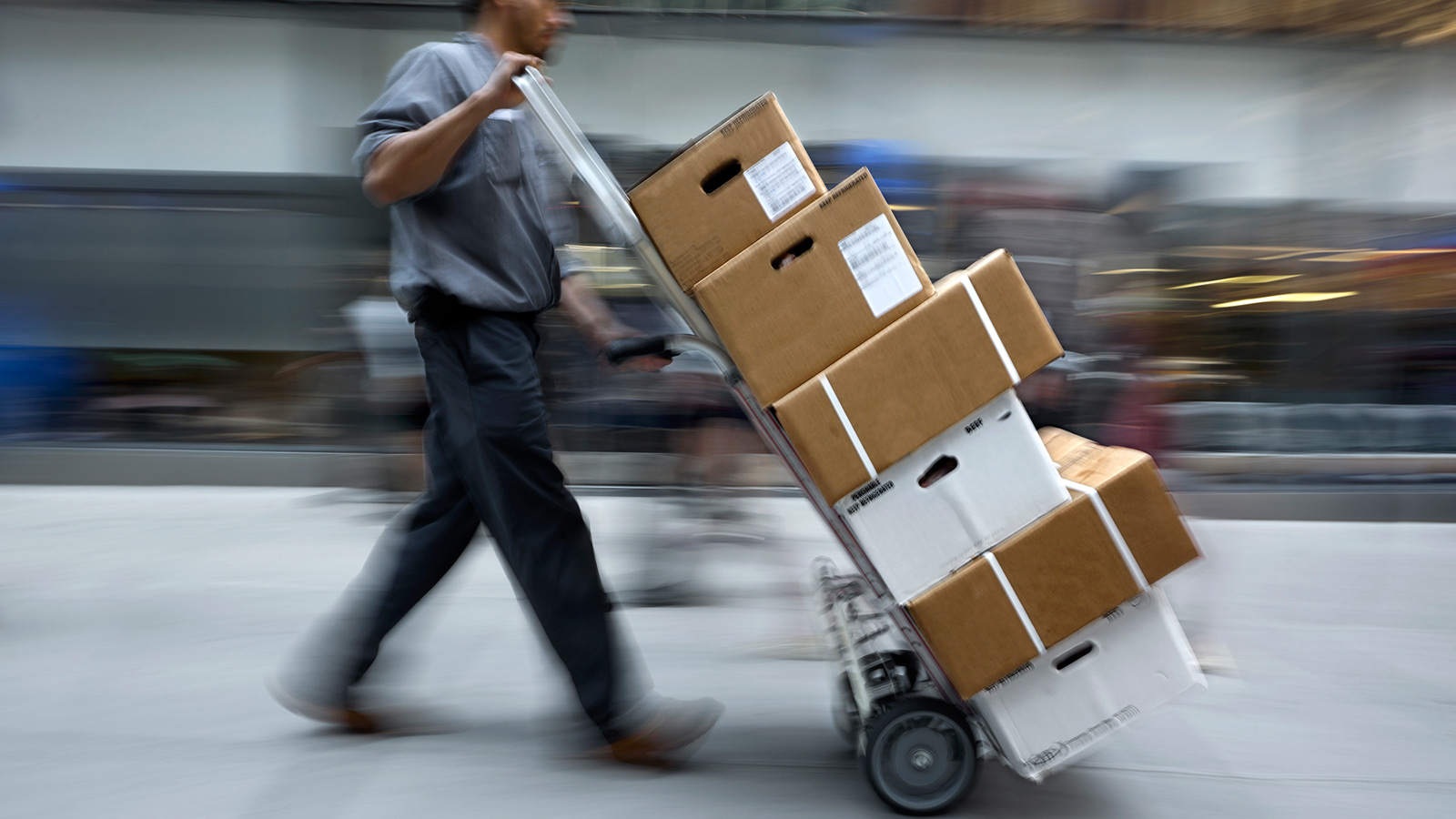Q. Who doesn’t love Amazon Prime’s free two-day shipping? But sometimes I wonder what the differential is in resource use, CO2 emissions, etc. between shipment speeds. If I want two-day shipping, does it require a special trip to get my item to me in that timeframe? Can shipments be more efficiently grouped if there is more time to get them where they are going? Obviously the ideal is to not buy things that need to be shipped at all, but if one must, is there a greener choice to be made by choosing a slower shipping speed?
Christina
Philadelphia, PA
A. Dearest Christina,
When I was a child, I sent away for a tank of sea monkeys. I remember waiting for the postman anxiously by the door, full of hope and then disappointment, until those tiny creatures finally arrived what seemed like years later. Those “monkeys” gave me endless delight, at least until a friend accidentally knocked their tank over onto my bedroom floor. Had two-day shipping been available to me back then, I’d have had four, five, maybe six more precious days with my sea monkeys. So yes, I deeply understand the appeal of a quick delivery.
But as you suspect, Christina, faster is not necessarily friendlier to the Earth. The more time you give a company to fulfill your order, the more freedom it has to choose lower-carbon shipping methods. So if you don’t actually need your Cards Against Humanity game post-haste, patience is indeed a virtue.
Putting aside exactly which mega-online shopping company is fulfilling your order for a moment, let’s look at a basic commandment of web consumerism: Thou Shalt Not Demand Air Delivery. Planes emit vastly more carbon than any other shipping method, and choosing next-day delivery makes it a lot more likely that your package will come your way via the friendly skies. One recent analysis from MIT compared brick-and-mortar shopping to online shopping and concluded that buying online typically has a lower carbon footprint — except when online shoppers choose rush delivery.
Now, two-day shipping gets a little trickier, because we can’t be sure exactly how much more efficient any particular shipment will be in that window. The final answer will depend (among other things) on how far your item has to travel to reach you and what other packages are being delivered in your area. If your order can be shipped to you from a nearby Amazon fulfillment center (and there is one close to Philly) and a fully loaded truck is already scheduled to make the rounds, then your two-day shipment could be just as green as a five-day shipment. But if your item must travel from, say, San Diego to your front porch in two days, well …
I spoke to James Corbett, a shipping expert at the University of Delaware, about your consumer conundrum, and he had this to say: “It’s not guaranteed that every shipment will be the least carbon-intensive shipment, but giving them more time generally allows more choices. Two-day shipping can put some constraints on a delivery provider in identifying the lowest-carbon, lowest-fuel cost pathways.”
So think of it this way: If the shipper has more freedom in scheduling deliveries, it can choose to hold back a delivery truck until it’s crammed full rather than send it out half-empty. And if your package doesn’t have to reach you by any particular time, the company can design the most efficient delivery route to your neighborhood. An interesting study from the University of Washington recently found that grocery delivery services slashed carbon emissions over individuals driving to and from the supermarket, but they achieved their biggest gains — 80 to 90 percent lower emissions — when they could plan deliveries around customer locations, not precise delivery windows (thus minimizing driving distance and time).
Don’t worry too much about shopping online, Christina — as the studies above show, it can often be a wiser choice than driving yourself to a store and plunking down your cash. But like so many other environmental choices, it’s best if you plan ahead. And while you’re at it, consolidate shipments of multiple items when you can and waive signature requirements (or use the Amazon locker) to prevent multiple delivery attempts.
Even better, let it be known you’d prefer even greener shipping options. “What would be nice is if, instead of a two-day or five- to 10-day window, there was a ‘green’ button that says, ‘do whatever it takes to achieve some degree of reduction across your shipments,’” says Corbett. “Once a year, contact a customer service representative and ask for that, so the company realizes there’s a customer base that prefers green shipments over fast or slow.”
And finally, lest you think I’ve missed the big picture: Remember, buying less stuff overall is always the greenest choice. Long live minimalism!
Bubble-wrappedly,
Umbra



